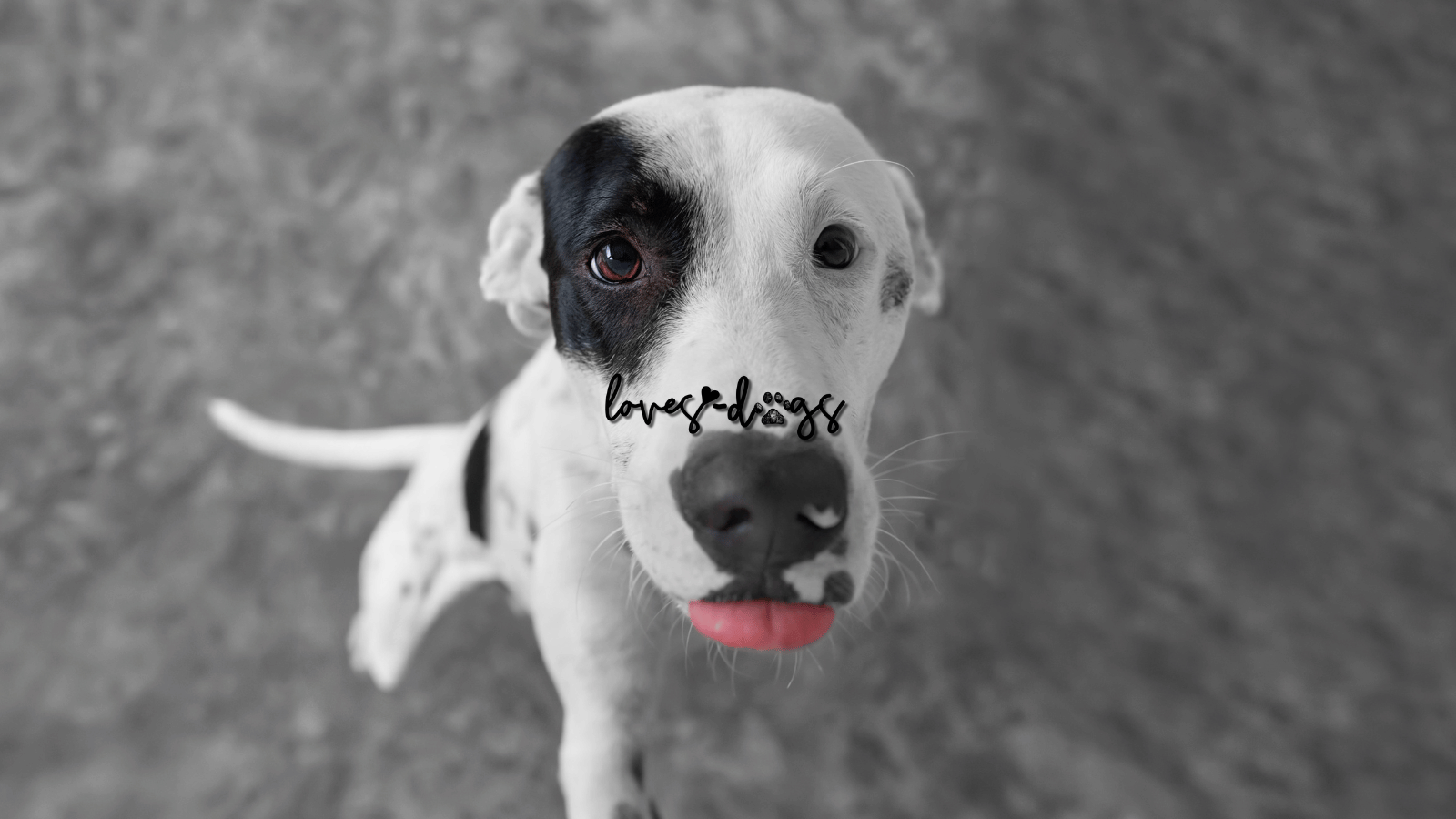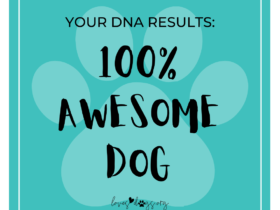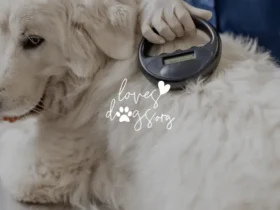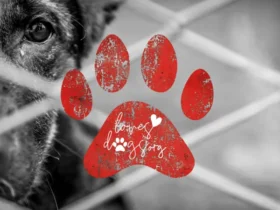
So you’re thinking about adopting a dog! 🐾
Let me be the first to give you kudos for considering adopting a dog–there are so, so many dogs who are in need of a home filled with love and kindness (and there are so, so many shelters and rescues suffering from overcrowding and over-population [please spay & neuter, peeps!]).
But…let me also be the first to play devil’s advocate.
Wait, what?
I know, I know. That sounds weird. Shouldn’t everyone be happy that you’re thinking about adopting?
Yes…well, sort of.
Hear me out.
Adopting in wisdom is very different from adopting out of excitement…adopting out of pity…adopting out of loneliness…gifting a dog for the holidays…you see where I’m going with this, yes?
The biggest difference is that one is a careful, deliberate decision and the other is not. One weighs the lifestyle you like to lead, your ability to commit to a relationship, your financial stability (and no, that doesn’t mean you have to be rich), your future plans and dreams, while the other does not.
So the BIG question is… “How do I know if adopting a dog is right for me?”
Knowing if you’re ready to adopt a dog begins by taking a deep dive into your heart AND mind. You can’t only look at emotions; you’ve got to look at the logic–does a dog fit into your lifestyle?
Adopting a dog is amazing, but it’s NOT so amazing if you surrender that dog a few days, months, or years later. Sure, things happen–there are always difficult times as we journey through life, but with the proper soul-searching and preparation, the vast majority of difficult times don’t necessitate surrendering or re-homing your canine family member.
Adopt a dog for LIFE. Some leave this world too soon, while others live long and seasoned lives, but you need to plan on a 15-year commitment.
15 years.
It’s a promise. It’s a commitment. It’s a covenant.
How do you know if you’re ready to adopt a dog?
I’ve put together some of the most important dog adoption considerations below, and I encourage you to walk through each of them carefully and methodically.
- Conduct Thorough Research on the Types of Dogs: The first step in adopting a dog responsibly is to thoroughly research and choose a dog breed that aligns with your lifestyle. Let’s take a look at the things you’ll want to think about:
- Assess Your Lifestyle. Before diving into specific breeds, take a close look at your lifestyle. Consider factors such as your living situation, daily routine, activity level, and family composition. Different breeds have varying energy levels, sizes, and temperaments, so it’s crucial to find a dog that aligns with your lifestyle.
- Identify Your Preferences. Make a list of traits and characteristics that are important to you in a dog. Consider factors such as size, coat type, exercise needs, grooming requirements, and temperament. Are you looking for an affectionate lap dog, an active running buddy, or a family-friendly companion? Understanding your preferences will help narrow down your choices.
- Research Dog Breeds. While you may adopt a mixed-breed dog, it’s still important to understand the tendencies and traits of different dog breeds since it will give you an idea of potential future behavior and needs. Learn about the breed’s history, temperament, exercise requirements, grooming needs, and potential health issues from reputable sources. Pay attention to any characteristics that may pose challenges or align well with your lifestyle.
- Visit Local Shelters and Rescues. In my humble opinion, the best place to find your dog soulmate is to consider adopting from your local shelter(s) or dog rescues. Spend time interacting with different dogs to get a sense of their personalities and behavior. Shelter staff can provide valuable insights into each dog’s history and help match you with a suitable companion.
- Consider Health and Longevity. Research the health considerations associated with the breeds you’re interested in. Some breeds may be prone to specific genetic conditions, and understanding potential health issues can help you make informed decisions.
- Financial Planning: Dogs come with financial responsibilities, including food, veterinary care, grooming, and medical care. Before adopting a dog into your family, create a budget that accounts for these costs. Regular veterinary check-ups and vaccinations are crucial for your dog’s health and can prevent the development of costly health issues. Let’s take a look at how you can financially plan for your dog soulmate:
- Adoption Fees and Initial Expenses. Adopting a dog involves an initial adoption fee, which varies depending on the shelter or rescue organization. This fee typically covers vaccinations, spaying/neutering, and a basic health check. Additionally, you’ll need to invest in essentials like a collar, leash, food and water bowls, a bed, toys, and grooming supplies. These initial costs can add up, so it’s wise to budget accordingly.
- Veterinary Care. Regular veterinary care is crucial for your dog’s well-being. Factor in routine check-ups, vaccinations, and preventative medications for fleas, ticks, and heartworms. Be prepared for unexpected veterinary expenses, such as illness or accidents, by considering pet insurance. While it adds to your monthly expenses, it can be a financial lifesaver when faced with unexpected medical bills.
- Food and Nutrition. Dogs require a balanced and nutritious diet to thrive. The cost of dog food depends on the size, breed, and dietary needs of your furry friend. High-quality dog food may be more expensive, but it can contribute to better overall health and potentially reduce future medical expenses. Treats and dental care products should also be factored into your monthly budget.
- Training and Behavioral Classes. Investing time and money in training and behavioral classes is essential for a well-behaved and happy pet. While some dogs may require professional training, others can benefit from group classes or online resources. A well-trained dog is not only easy to be around but can also prevent destructive behaviors that may lead to additional expenses.
- Grooming. Grooming needs vary among dog breeds, with some requiring regular trips to the groomer for haircuts, nail trims, and baths. Others may only need occasional brushing. Consider these grooming requirements when planning your budget, and factor in the cost of grooming tools for at-home maintenance.
- Boarding and Pet Sitting. If your lifestyle involves travel or long work hours, you may need to budget for boarding or pet-sitting services. Quality care for your dog in your absence ensures their well-being and prevents stress-related issues. Research local options and factor these expenses into your overall financial plan.
- Time Commitment: Dogs thrive on companionship, and neglecting their need for social interaction can lead to behavioral problems. Ensure that you have enough time in your daily schedule to spend quality time with your dog. Regular walks, playtime, and positive interactions contribute to a happy and well-adjusted pet. Let’s take a look at creative ways busy dog owners can spend time with their furry family member:
- Combine Exercise and Bonding. Maximize your workout routine by incorporating your dog. Whether it’s going for a jog, hiking, or even practicing yoga, having your dog as a workout buddy can be both efficient and enjoyable. Dogs love the outdoors, and you’ll both benefit from the physical activity.
- DIY Puzzle Toys. Mental stimulation is just as important as physical exercise. Create DIY puzzle toys by hiding treats in containers or wrapping them in old towels. This not only keeps your dog entertained but also engages their problem-solving skills, providing mental stimulation.
- Bring Your Dog to Work. If your workplace allows it, consider bringing your dog to the office. This way, you can spend more time together while juggling professional responsibilities. Having your dog around can reduce stress and create a positive atmosphere.
- Quality Over Quantity. Make the most of the time you have. It’s not always about the length of time spent but the quality of interaction. Even if you only have 15 minutes, engage in activities your dog loves—whether it’s playing fetch, practicing tricks, or simply enjoying a good belly rub.
- Incorporate Training Into Daily Activities. Combine training with daily routines. Teach your dog new tricks or reinforce existing commands while doing chores. This not only saves time but also strengthens the bond between you and your dog.
- Doggie Playdates. Socialization is key for a happy pup. Organize playdates with other dog owners in your neighborhood. This way, your dog can expend energy, socialize, and have fun—all without taking up too much of your time. Have a shy or reserved pup with social anxiety? That’s okay! Doggie playdates aren’t for every dog. Be sure to get to know your adopted dog’s personality before engaging on playdates.
- Interactive Technology. Leverage technology to stay connected. Use interactive toys or pet cameras that dispense treats remotely. This allows you to engage with your dog even when you’re away, fostering a sense of connection.
- Explore Dog-Friendly Events. Look for dog-friendly events in your community. Attend local dog meetups, charity walks, or pet-friendly festivals. These events provide a chance for both you and your dog to socialize, have fun, and make lasting memories.
- Training, Socialization, and Exercise: Studies show that when you invest time in training and socializing your dog with other pets and people, you’ll have a dog who is less likely to develop behavioral issues over the long term. Regular exercise, basic obedience commands, and positive reinforcement techniques make a significant difference as well.
- Start Early. The best time to start training and socializing your dog is during their puppyhood. Puppies are more adaptable and receptive to new experiences during their early developmental stages. Introduce them to various environments, people, and other animals to build a foundation for a well-rounded adult dog.
- Basic Obedience Training and Positive Reinforcement. Teaching basic commands like sit, stay, come, and heel is essential for effective communication with your dog. Use positive reinforcement techniques such as treats, praise, and affection to reward good behavior. Consistency is key, so practice these commands regularly in different settings to reinforce their learning.
- Regular Exercise: Adequate physical exercise is essential for a dog’s mental and physical well-being. Dogs that do not receive enough exercise may develop behavioral problems out of boredom or excess energy. Include them in your own exercise routine, and commit to regular walks, play sessions, and activities that suit your dog’s breed and energy level.
- Socialization with People. Expose your dog to a variety of people, including different ages, genders, and ethnicities. Encourage positive interactions by rewarding calm behavior around strangers. This will help prevent fear or aggression towards unfamiliar faces and make your dog a more confident and friendly companion.
- Socialization with Other Dogs. Arrange playdates with other well-behaved dogs to promote healthy social interactions. This not only aids in socializing your dog but also provides them with the physical exercise they need. Supervise the interactions initially and intervene if any signs of aggression or fear arise.
- Exposure to Various Environments. Expose your dog to different environments, such as parks, urban areas, and crowded spaces. This exposure helps them become accustomed to various stimuli, reducing anxiety and fear in unfamiliar settings. Gradually increase the complexity of the environments to challenge and strengthen their adaptability.
- Patience and Consistency. Training takes time, and every dog learns at his or her own pace. Be patient and consistent in your approach. If your dog makes a mistake, correct them calmly and redirect their behavior. Consistency in your commands and expectations will help your dog understand what is expected of them.
- Professional Dog Training Classes. If you’re experiencing training difficulties with your dog (or even if you’re not), consider enrolling your dog in professional training classes. These classes provide structured learning environments and expert guidance, enhancing your dog’s training and socialization skills. Additionally, they offer an opportunity for controlled social interactions with other dogs.
- Prepare for Life Changes: Life is full of surprises, and unexpected changes can happen. When major life changes come your way, such as moving, having a baby, or changing jobs, make a plan that includes your dog. When you’ve considered these life changes ahead of time, and when you’ve planned for the day they arrive, it’s easy to see how your canine family member fits into the picture.
One of our aims here at Loves Dogs is to reduce the number of owner surrenders and to curb the rising “rehoming” trend. Sure, there will be situations where there isn’t any other choice than surrendering or rehoming, but proactively envisioning your life gives you the ability to include your dog in your life’s plan.
Financial hardships are real, and we understand that. One of our primary missions at Loves Dogs dog rescue is to provide a pet food pantry to owners who are experiencing financial difficulty. By building the bridge to keep bellies full and families together, we hope to eliminate the impossible choice between dog owners feeding themselves or feeding their four-legged family members, and we hope to drastically reduce the rate of owner surrenders. You can learn more about the Loves Dogs Pet Food Pantry by clicking here. - Emergency Planning: Develop a plan for your dog’s care in case of emergencies or unforeseen circumstances. Identify friends, family members, or reputable boarding facilities that can provide temporary care if you are unable to. Having a contingency plan can reduce the stress on both you and your dog during challenging times. It’s common not to think about things like, “what should I do with my dog if my house is evacuated for a hurricane?” These uncommon occurrences can be very real if you’ve experienced them, so it’s very important to have a plan when an emergency or natural disaster hits. Let’s take a look at how you can prepare.
- Establish a Financial Plan: In the event of an emergency, financial considerations can play a significant role in your dog’s care. Set aside a designated fund or explore pet insurance options to cover unexpected veterinary expenses. Discuss financial arrangements with your chosen caregiver so that your dog receives the necessary care without delays.
- Create an Emergency Contact List: Compile a comprehensive list of emergency contacts, including family members, friends, neighbors, and fellow pet owners. Ensure that at least one person on the list is familiar with your dog’s routine, medical history, and any special needs. This will be invaluable in case you’re unable to care for your dog temporarily.
- Make an Evacuation Plan: If you live in an area prone to natural disasters, have a clear evacuation plan in place. Pack an emergency bag for your dog with essentials such as a collar, leash, food, water, medications, and comfort items. Identify pet-friendly shelters or hotels in advance, and ensure your emergency contacts are aware of the plan.
- Designate a Temporary Caregiver: Identify someone you trust to be a temporary caregiver for your dog in case you’re unable to fulfill your responsibilities. Discuss your expectations with them, share important details about your dog’s habits, preferences, and medical history, and make sure they have access to your home and your dog’s essentials.
- Utilize Technology: Take advantage of modern technology to ensure your dog’s well-being during emergencies. Consider investing in a pet monitoring system or a GPS collar that allows you to track your dog’s location. Create a shared online document with your dog’s information and share access with your emergency contacts.
Drinking from a Fire Hose
Okay, so I know there’s a lot to digest here…
But, if you walk away with two or three new ideas as to how you can welcome a dog into your life responsibly, then I think it’s a GOOD thing.
If you’re already a dog owner and we’ve shared tips that will help your journey, I’m calling it a WIN.
And if you never knew that a thing called a Pet Food Pantry actually exists, well, that’s why we created one. Another reason to celebrate.
We’re not striving for perfection here, but we are striving for PROGRESS when it comes to helping dog owners and future dog owners envision and plan their lives with their furry family members…for life.
Because…Dogs. And we love those dogs with our whole being, our whole heart, and every fiber in our bodies.
And when you experience a dog that reaches beyond and touches your heart, you will, too. For now, we wish you a future of many licks, lots of cuddles, and years of laughter with that lucky soul who will see you as their “forever.”
–Signed,
she loves dogs ❤️🐾









Find Loves Dogs on Social